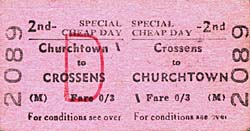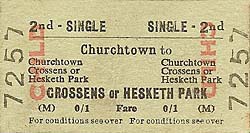
Station Name: CHURCHTOWN [Source:Tony Graham &
Paul Wright]
old2.jpg) Churchtown station seen during the construction of Cambridge Road in the late 19th century. The station’s street-level booking office can be seen to the right of the picture.
 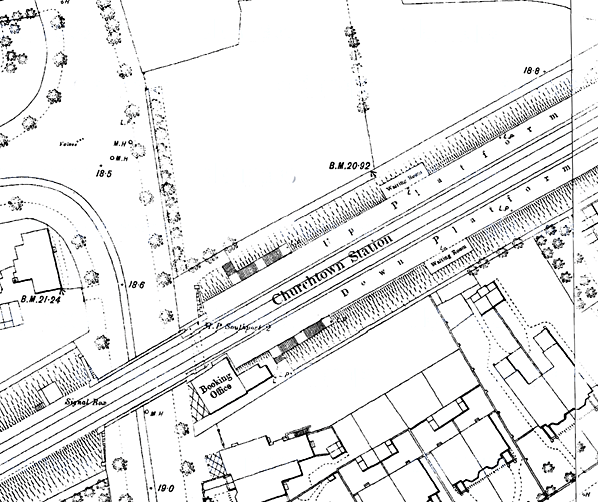 Churchtown station on an 1890 OS Southport town plan. The map shows how the booking office was at street level and the platforms were on an embankment. Note also the tramway passing directly in front of the station; trams provided direct competition with the WLR.
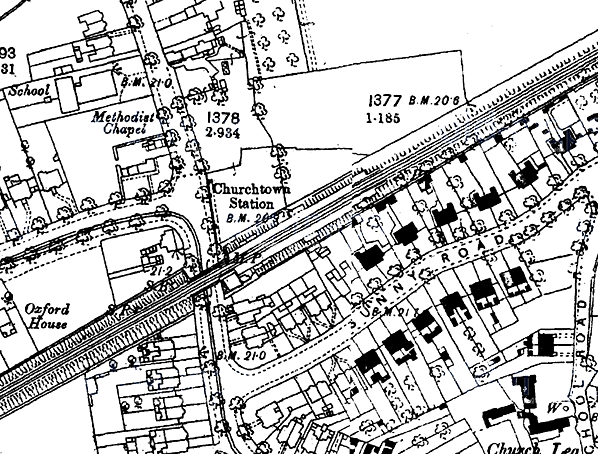 1894 1:2,500 OS map shows that Churchtown station had good revenue potential, as even by this date the area was becoming built up.
old8.jpg) A Preston to Southport Chapel Street service calls at Churchtown station in 1939. 2432 entered service on 14.3.1936 after being built at Derby works. This Stanier-designed 2-6-4 class 4 passenger tank passed to BR and became 42432, allocated to 11A Carnforth shed until 7.11.1959, when it was reallocated to 11B, Barrow-in-Furness shed from where it was withdrawn on 21.8.1965. It was scrapped by Cashmores of Newport in February 1966,
old9.jpg) A Crossens to Southport Chapel Street EMU of LYR vintage arrives at Churchtown station on 17 April 1939. The EMU was of a type built to operate on through services between the Liverpool - Southport line and the Liverpool Overhead Railway. This service was short-lived and the EMUs found their way onto Southport and Crossens services. A railway employee can be seen racing along the down (Preston-bound) platform, presumably in an attempt to reach the station exit in time to collect tickets from any alighting passengers.
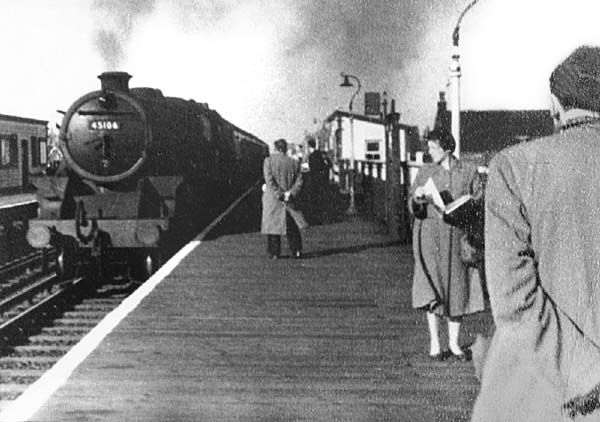 Looking south-west along Churchtown station's down (Preston-direction) platform in the early 1960s. The picture suggests that Churchtown was a well-used local station. The train arriving would have been en-route to Preston from Southport Chapel Street. 45106 was built in 1935 by the Vulcan Foundry for the LMS. It had a working life of over 31 years being withdrawn from 12A, Carlisle Kingmoor shed in January 1967, and cut up by Campbells of Airdrie in May of that year.
old12.jpg) Looking north-east at Churchtown station from the west end of the down (Preston-direction) platform in 1963. The station’s timber platforms and waiting shelters are clearly shown. Despite being a busy commuter facility on an electrified line the station was to close the following year.
Copyright photo from Stations UK old1.jpg) The 09:30 Southport to Preston service hauled by ex-LMS Class 5MT (Black 5) locomotive number 44940 arrives at Churchtown station in August 1964. The station was on an embankment and was provided with wooden, rather than masonry, platforms to keep their weight to a minimum. This picture was taken from the up (Southport-bound) platform. Three coaches make an easy load for this Black Five, and it looks as if all is well in the cab, with the fireman taking it easy! 44940 was one of a batch of 14 Black Fives built at Horwich works and entered service in November 1946 at 26A, Newton Heath shed numbered 4940. After spells at 24B, Rose Grove and 10C, Fleetwood sheds, it moved to 9B, Stockport Edgeley shed in February 1966, from where it was withdrawn in March, 1968 and scrapped at Drapers of Hull in August of the same year.
Photo by D. Hampson old12.jpg) Looking north-east along the down (Preston-bound) platform at Churchtown station in late 1964 or early 1965. Demolition of the station's platforms was underway.
old11.jpg) Churchtown station looking north-east on 31 January 1965. Demolition of the platforms was almost complete and the down line had been lifted.
Photo by K G Rose old19.jpg) The south-west- end of Churchtown station in March 1965. The timber platforms had been removed leaving only the stone supports as evidence that there had been a platform at this location. To the left of the picture the footpath led down to the station’s street-level building, the rear of which is visible adjacent to the bridge.
Photo by K Hick old7.jpg) Churchtown station building on Cambridge Road in March 1965.
7.jpg) The site of Churchtown station looking south-west in August 1984. The picture was taken from a point that would have been towards the north-eastern end of the station. The embankment which carried the line through Churchtown had been completely swept away.
Photo by John Mann 3.jpg) Looking north-east at the site of Churchtown station in July 2011. The station booking office had been to the left of the yellow and black sign. The station platforms had been above street level on an embankment.
Photo by Paul Wright 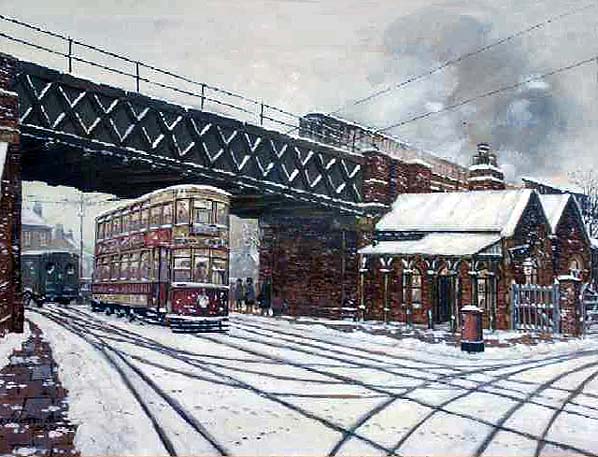 An artist’s impression of how Cambridge Road and Churchtown station might have looked on a winter's day in 1928.
Painting by Tom Lally  Home
Page Home
Page
|
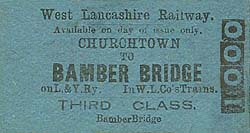

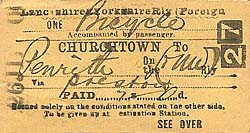
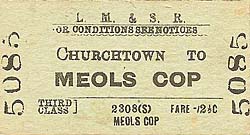
.gif)
